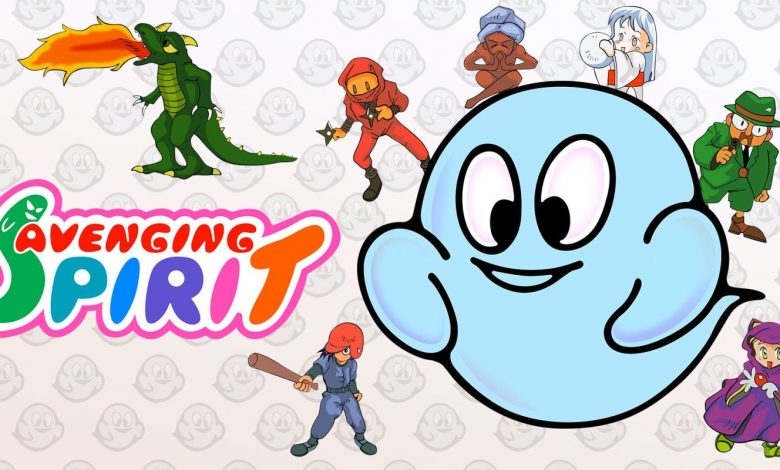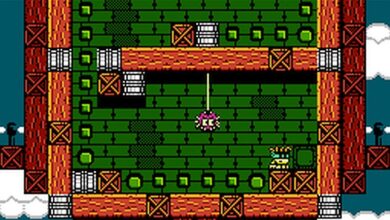Spirited away: Avenging Spirit and the value of character

A fascinating curio that’s worthy of in-spook-tion
Developed by the incredibly unfortunately-named C.P. Brain, published by Jaleco, and now re-released on Switch by Ratalaika Games/ININ, Avenging Spirit is, to say the least, not the best game in the world. But it raises something important that I feel a pressing urge to talk about – character. You see, Avenging Spirit has a lot of it and I feel strongly as though it needs praising for that, and its validity as a gaming experience proselytised. Is that the right word? Look, let me rephrase everything I’ve said so far: Avenging Spirit sucks. But it sucks in an extremely fun way.
For a start, the premise is fairly bonkers – you die in the attract mode, then take control of your (avenging!) spirit and possess an enemy sprite, each of which offer different abilities within a two-button framework. Possession seems like an oddly attractive idea to game developers, or at least it used to. How many titles utilised it or a similar mechanic? Abe’s Oddysee, Geist, Messiah… erm… that weird Driver game from a few years ago. You know the one? It seems the idea of hijacking someone’s body and piloting it about the place is (or was) an appealing one for the absolute degenerates that make up the games industry. Thankfully these deviants were put out to pasture when crafting became a thing.

Anyway, yes, Avenging Spirit – it’s a very simplistic little platformer with the added frisson of possession, and the varying abilities and vital stats you’ll take on from your flesh puppets. For example, there are enemies with guns, enemies with homing missile launches strapped to their backs, enemies who roll snowballs, perform high kicks, cast spells, throw grenades, et bastard cetera. And, of course, they move differently too – some sprinting gamely along, some shuffling weakly from side to side. It doesn’t enormously transform the gameplay – there are too few variables for that – but it does add, once again, character to the proceedings.
The fun of it all is helped along by a fairly bonkers soundtrack and appealing cartoonish visuals. Additionally, for a coin-op, Avenging Spirit isn’t really all that difficult; on my last attempt I made it to stage 3 without taking much damage and that was mostly because I made some poor possession decisions. Time pressure is a factor, as your health will drain whenever you’re in the spirit form, requiring you to play smart and possess nearby enemies if possible. This, if you’re not careful, can put you in a disadvantageous position as you’re lumbered with a weak or slow body, unable to get another due to time constraints. Thankfully health items are hidden around as rewards for exploration or careful platforming.

Now, as the beloved and beautiful GSK has previously noted, you’ll want to wait on a patch for this one; there’s a pretty severe sound issue that can be triggered simply by dropping to the menu and resuming the game. The pitch and speed of the music is incorrect, not to mention some extremely delayed sound effects; it’s a shame because I honestly thought we were past this kind of emulation issue on contemporary systems. That said, Ratalaika’s take on Gley Lancer had a similar issue so maybe it’s their wrapper/engine causing the problem. Options-wise it seems a little sparse, with both the worldwide version and the original Japanese Phantasm available, a few display options and not much else. There’s the choice between the arcade original with its dipswitches etc, or a version tailored for consoles that I personally couldn’t really see the difference of. Easier, I suppose? Maybe?

Anyway, yes – Avenging Spirit is somewhat lacking on the gameplay front, but nonetheless enjoyable as a spectacle and a bouncy, colourful oddity. Worth a look, but wait for a patch.




